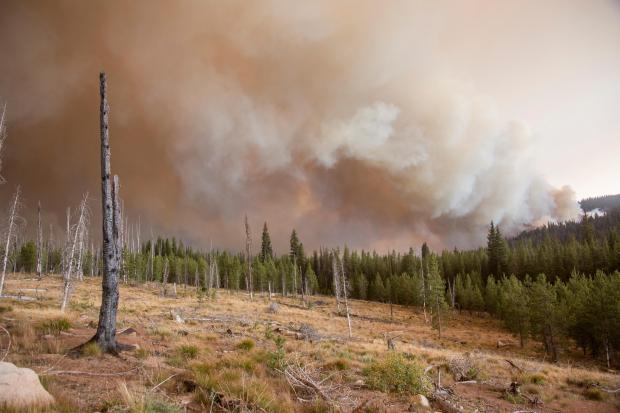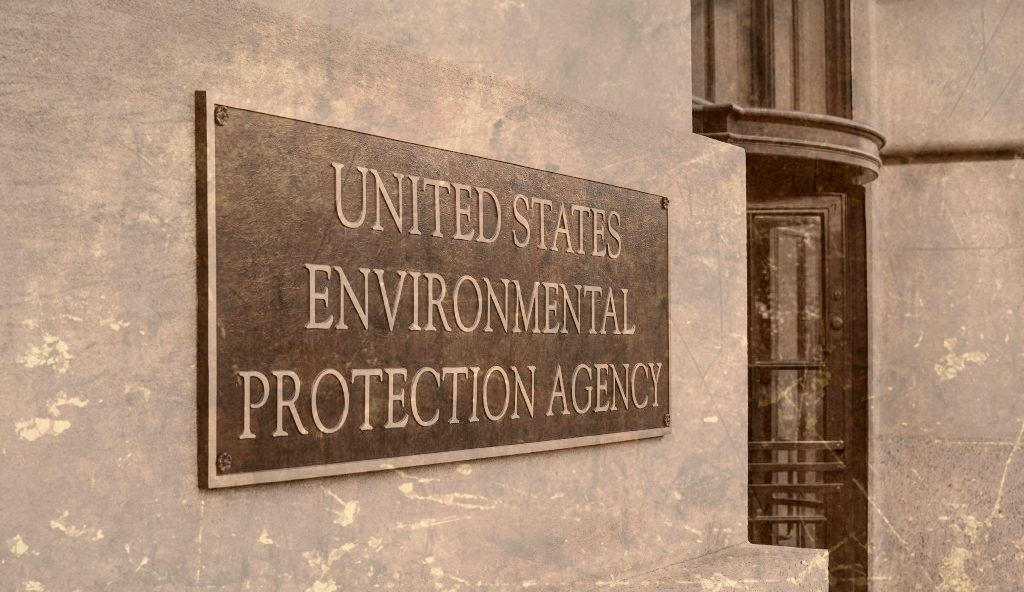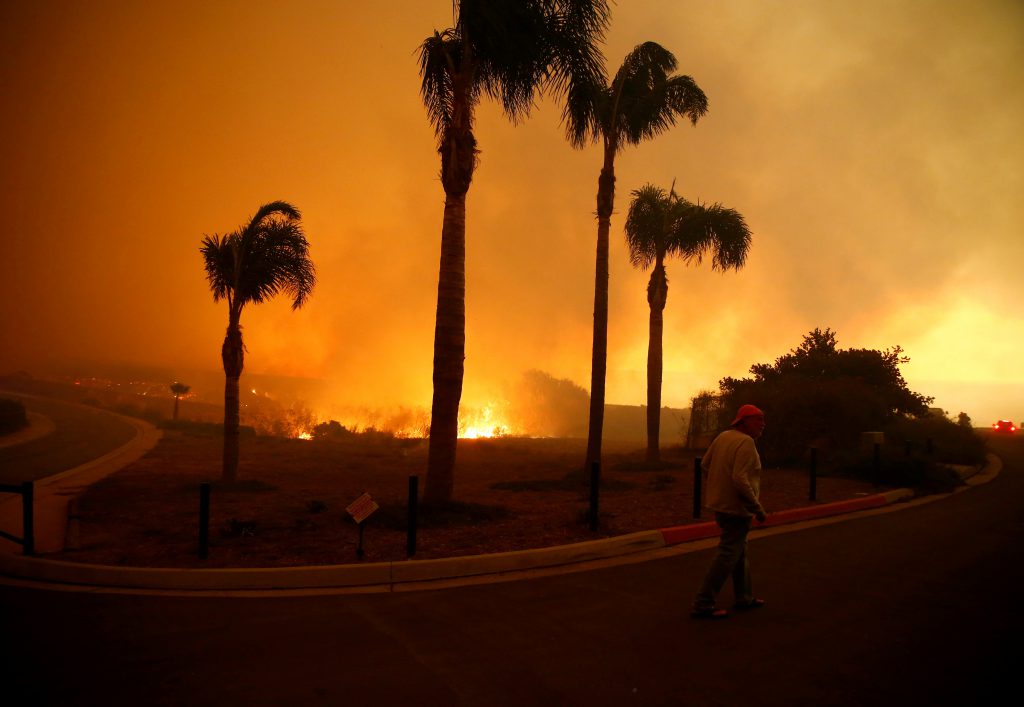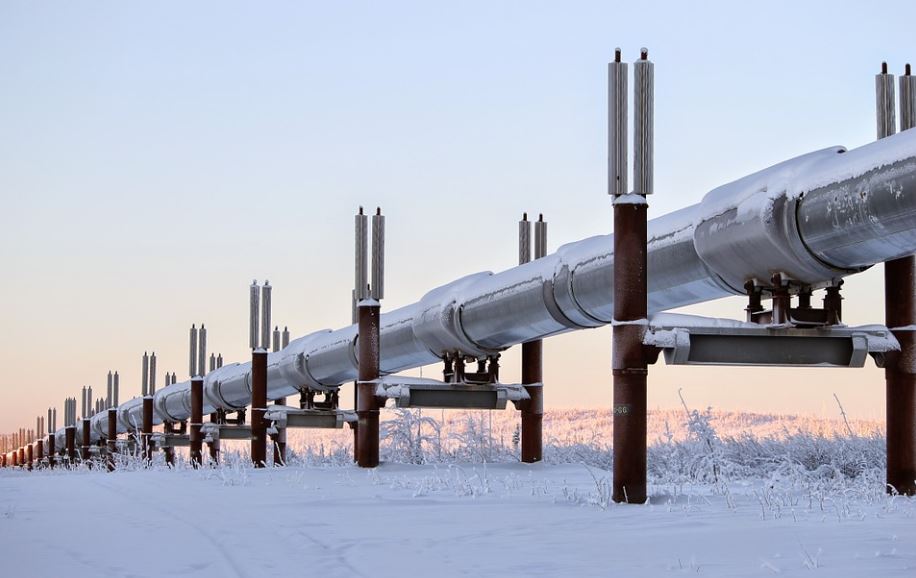Burning biomass, aka wildfires, emits emissions of CO2, smoke, soot, haze, and other particulates far in excess of that produced by coal-fired power plants.
Free Range Report Staff
Three important regional power plants were put on the chopping block in Colorado last week as a result of rules created by the world’s most aggressive–and radicalized–green group, the United States Environmental Protection Agency (EPA). The power plant closures, over the next 6-10 years will mean 500 good-paying jobs will be lost from the plants themselves. Also lost will be thousands of jobs, directly and indirectly related to the mines which provide coal for the power plants, and the communities which provide goods and services to the coal miners and plant employees.
Sharpening the blade of the executioners ax were extremist enviro minions, WildEarth Guardians, Sierra Club and the Center for Biological Diversity, all off whom have sued domestic energy producers at all levels based on the EPA’s ‘haze’ rule. The haze regulations, formulated on the premise that CO2 from power plants causes haze and greenhouse gasses which result in ‘climate change,’ and that climate change is destroying the planet, are so strict as to be impossible. Caught between the EPA and lawsuits from extreme greens, the power plants have been forced to become parties to their own extinction. CBSDenver reported:
The agreement stems from a 2012 lawsuit filed by WildEarth Guardians over Colorado’s plan to meet federal rules for reducing haze. A 2014 settlement required pollution controls on Unit 1 at Craig, but the parties to the lawsuit eventually decided it would be better to shut it down, along with the Nucla plant, said Jeremy Nichols, climate and energy director for WildEarth Guardians.
The agreement will reportedly cut emissions from Colorado coal-fired power plants by 9 percent. The closures will inevitably result in ‘skyrocketing‘ electricity costs throughout Colorado, and most likely, fat taxpayer subsidies for ‘green energy’ corporations looking to replace efficient, reliable, cheap coal energy with inefficient, unreliable, expensive wind and solar.
But surpassing the politics of extreme green groups’ efforts to save the planet from haze and emissions by shutting down power plants–and shutting out affordable energy for Americans–is the hypocrisy exposed by the science of it all.
Wildfires
Burning biomass, aka wildfires (intended and accidental), emits emissions of CO2, smoke, soot, haze, and other particulates far in excess of that produced by coal-fired power plants. Mother Jones reports that burning biomass accounts for nearly 20 percent of carbon emissions around the world. Citing a study by the Journal of Geophysical Research: Atmospheres, the Mother Jones article summarizes:
…the burning of biomass like trees, plants, and grass—either by accident or deliberately (often to create room for agriculture)—creates 18 percent of all human-caused carbon emissions. Worse yet, that pollution kills people: Around the world, Jacobson writes, biomass burning may account for 5-10 percent of all air pollution deaths worldwide, or about 250,000 people annually.
The Abstract of the study reads:
This paper examines the effects on climate and air pollution of open biomass burning (BB) when heat and moisture fluxes, gases and aerosols (including black and brown carbon, tar balls, and reflective particles), cloud absorption effects (CAEs) I and II, and aerosol semidirect and indirect effects on clouds are treated. It also examines the climate impacts of most anthropogenic heat and moisture fluxes (AHFs and AMFs). Transient 20 year simulations indicate BB may cause a net global warming of ~0.4 K because CAE I (~32% of BB warming), CAE II, semidirect effects, AHFs (~7%), AMFs, and aerosol absorption outweigh direct aerosol cooling and indirect effects, contrary to previous BB studies that did not treat CAEs, AHFs, AMFs, or brown carbon. Some BB warming can be understood in terms of the anticorrelation between instantaneous direct radiative forcing (DRF) changes and surface temperature changes in clouds containing absorbing aerosols. BB may cause ~250,000 (73,000–435,000) premature mortalities/yr, with >90% from particles. AHFs from all sources and AMFs + AHFs from power plants and electricity use each may cause a statistically significant +0.03 K global warming. Solar plus thermal-IR DRFs were +0.033 (+0.027) W/m2 for all AHFs globally without (with) evaporating cooling water, +0.009 W/m2 for AMFs globally, +0.52 W/m2 (94.3% solar) for all-source BC outside of clouds plus interstitially between cloud drops at the cloud relative humidity, and +0.06 W/m2 (99.7% solar) for BC inclusions in cloud hydrometeor particles. Modeled post-1850 biomass, biofuel, and fossil fuel burning, AHFs, AMFs, and urban surfaces accounted for most observed global warming
Conclusion: Biofuel burning emits a heckuva lot more bad stuff into the atmosphere, and has a greater impact on increased global surface temperatures, than power plants. The study does not mention that those nations which do not have an abundant supply of reliable, cheap fossil fuels to run their economies MUST BURN BIOFUELS TO COOK MEALS AND HEAT HOMES.
This brings to mind the question, “why do extreme greens want to thrust the civilized world back into the pre-industrial era when doing so would have no effect on global temperatures?” Evidence is rife that the extreme greens; Sierra Club, Center for Biological Diversity, WildEarth Guardians, et al., don’t really care. They just want fossil fuels to go away, forever.
Sierra Club and Center for Biological Diversity both advocate phasing out domestic energy production; fracking, mineral and fossil fuels extraction, coal and gas-fired power plants, etc.
In July, the Sierra Club sent a mailer to members asking them to send and to the president, asking to ‘protect’ the wilderness but shutting down logging and domestic energy production. It read, in part: “With such problems as underfunding, the encroachment of oil and gas, timber and other dirty energy exploration and extraction…I urge you to protect our natural national treasures…”
But what about dirty wildfires? No mention was made of those in the Sierra Club mailer.
The Center for Biological Diversity (CBD) recently made this pitch to the Secretary of the Interior and Bureau Land Management, calling for an end to coal extraction on BLM-managed lands. It read, in part: “We are scientists writing to urge the Department of the Interior to take meaningful action to fight climate change by ending federal coal leasing, extraction and burning.”
The letter warned ominously: “In the United States, coal is the largest and most carbon dioxide-intensive conventional fossil fuel resource, with federal coal making up approximately 41 percent of total U.S. coal production. In addition to its climate impacts, coal mining and burning causes well-documented harms to public health and biodiversity.”
Nowhere in the letter to Secretary Jewell, did CBD mention wildfires, nor was there any call for equal diligence in ending wildfires on federally-controlled lands.
The EPA and extreme greens use an arsenal of political weapons in the war against affordable energy: Haze, CO2, Mercury, Ozone, and other rules governing emissions, as well as bizarre anti-fossil fuel campaigns such as “Keep it in the Ground” and various state ballot initiatives, such as the mandatory 2500 foot setback effort in Colorado. But in a brazen display of unscientific hypocrisy, biofuels burning, in particular wildfires on federal lands, are ignored as threats to the environment and human health.
Climate Central concluded the following in a study about wildfires and air quality:
- Wildfires caused the worst air pollution day of the year in the affected areas, for all of the fires analyzed. And the worst day of the year was bad, often as bad or worse than air pollution levels in Beijing. In 9 of the 11 fires analyzed, particulate pollution from the fire made the air unhealthy to breathe for anyone, not just children and sensitive populations.
- Wildfires burning within 50-100 miles of a city routinely caused air quality to be 5-15 times worse than normal, and often 2-3 times worse than the worst non-fire day of the year.
- This year has seen particularly bad examples of this. Grants Pass, Ore. experienced hazardous air quality this summer, caused by the Douglas Complex and Big Windy Complex fires burning in Southern Oregon. For nine days this summer, Grants Pass had air quality so poor that it was unhealthy for anyone to be outside. On five of these days, fine particle pollution was literally off the charts- higher than the local air quality meter could read.
- Big metro areas are also susceptible to wildfire pollution. At least twice in the last 12 years, cities like Los Angeles, San Diego, and Riverside, Calif. have seen Beijing-level air pollution caused by wildfires burning in southern California.
And, if you’re not convinced by the science, the following photographs help make the case that wildfires are a bigger threat to our national parks and ‘natural national treasures’ than power plant emissions.
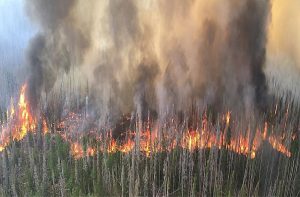
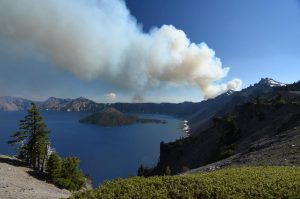
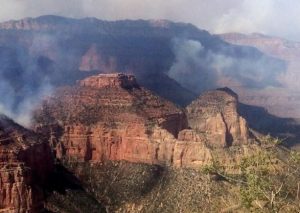
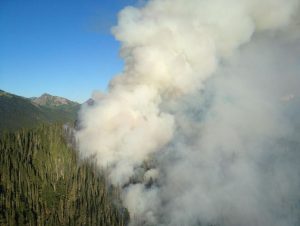
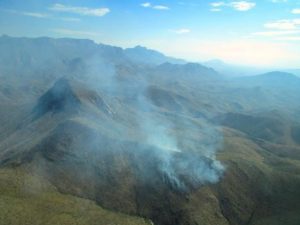
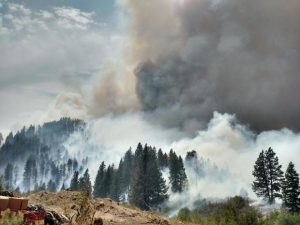
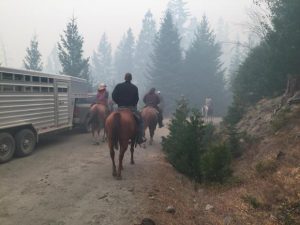
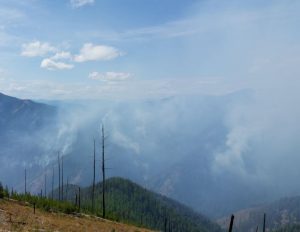
In 2015, over 10 million acres were burned by wildfire in the United States, alone. The wildfires of 2016 may surpass the records set last year. Find updated information here.
There is nothing that distills the anti-progress agenda of the extreme greens quite as clearly as their pretense that wildfires, and the global burning of biomass, are not worth mentioning in conversations about CO2, haze, pollution, public health, and ‘climate change.’ Power plants make civilization possible, and the greatest threat to the planet and its inhabitants is their demise.
Free Range Report
